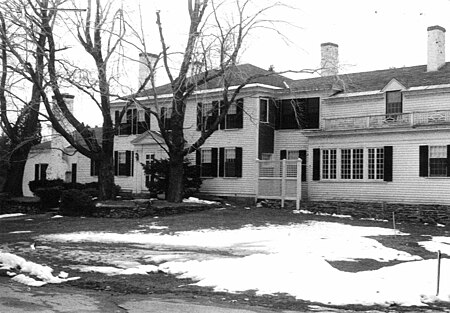Barlin Acres
Demolished buildings and structures in MassachusettsFederal architecture in MassachusettsHouses in Worcester County, MassachusettsHouses on the National Register of Historic Places in Worcester County, Massachusetts

Barlin Acres (or the Keyes-Dakin House) was an historic house located on what is now East Temple Street in Boylston, Massachusetts. Built in 1734 and eventually transformed into a summer estate house, it was home to a founder of Boylston, and a good example of colonial and Federal period architecture. The house was listed on the National Register of Historic Places on November 26, 1982. It was subsequently demolished to make way for the clubhouse of the Cyprian Keyes Golf Club, which now stands on its site. The clubhouse contains architectural elements recovered from the house, including some flooring and the 19th century Music Room.
Excerpt from the Wikipedia article Barlin Acres (License: CC BY-SA 3.0, Authors, Images).Barlin Acres
East Temple Street,
Geographical coordinates (GPS) Address Phone number Website Nearby Places Show on map
Geographical coordinates (GPS)
| Latitude | Longitude |
|---|---|
| N 42.334444444444 ° | E -71.722777777778 ° |
Address
Cyprian Keyes Golf Club
East Temple Street 284
01505
Massachusetts, United States
Open on Google Maps








